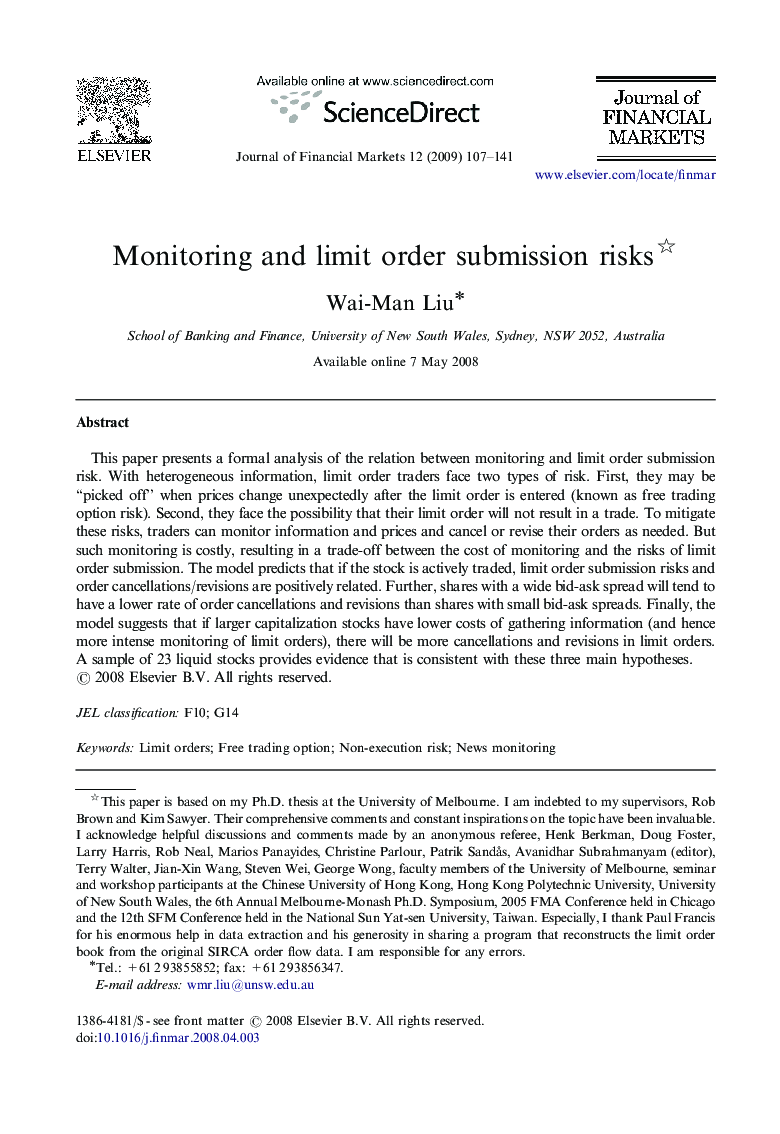| Article ID | Journal | Published Year | Pages | File Type |
|---|---|---|---|---|
| 961136 | Journal of Financial Markets | 2009 | 35 Pages |
Abstract
This paper presents a formal analysis of the relation between monitoring and limit order submission risk. With heterogeneous information, limit order traders face two types of risk. First, they may be “picked off” when prices change unexpectedly after the limit order is entered (known as free trading option risk). Second, they face the possibility that their limit order will not result in a trade. To mitigate these risks, traders can monitor information and prices and cancel or revise their orders as needed. But such monitoring is costly, resulting in a trade-off between the cost of monitoring and the risks of limit order submission. The model predicts that if the stock is actively traded, limit order submission risks and order cancellations/revisions are positively related. Further, shares with a wide bid-ask spread will tend to have a lower rate of order cancellations and revisions than shares with small bid-ask spreads. Finally, the model suggests that if larger capitalization stocks have lower costs of gathering information (and hence more intense monitoring of limit orders), there will be more cancellations and revisions in limit orders. A sample of 23 liquid stocks provides evidence that is consistent with these three main hypotheses.
Keywords
Related Topics
Social Sciences and Humanities
Economics, Econometrics and Finance
Economics and Econometrics
Authors
Wai-Man Liu,
